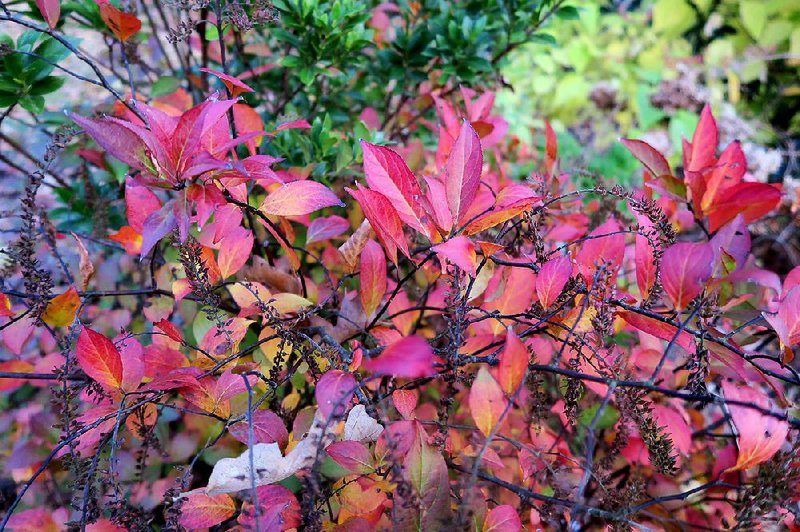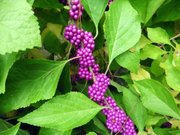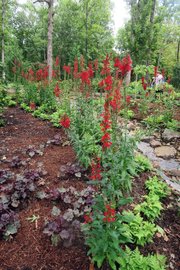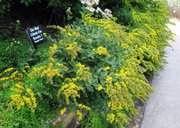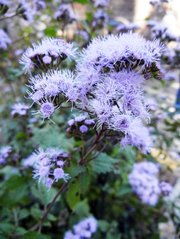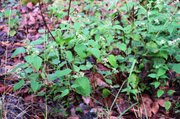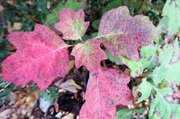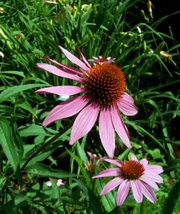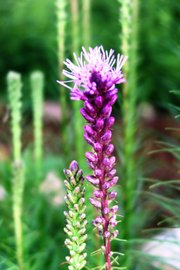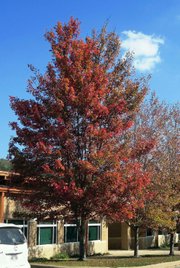School is back in session and football season has begun, so fall must be on the horizon even though temperatures don't always feel fall-like. But I am not complaining about the summer we had this year.
Some of our favorite and most colorful performers in the garden die or start to go dormant in the fall. But with very little thought it's easy to grow something colorful in every season, including fall. That's why I am always preaching to gardeners to expand their plant palette.
Let's check out some options for fall color using native plants.
TO THE TREES
Many of the shade and ornamental trees in our landscapes are natives, from oaks and maples to tulip poplars, dogwoods and redbuds. Redbuds turn an unimpressive yellow in fall that seldom rates a second glance, but tulip poplars turn a deep gold. For fall color, dogwoods give us red, while maples can be red, yellow or orange.
Some underused native trees include:
• Blackgum (Nyssa sylvatica), which turns brilliant red in the fall.
• Sourwood (a member of the azalea family), which has beautiful flowers in the summer and brilliant red fall foliage.
• Sassafras, a mid-size native tree with three differently shaped leaves on the same plant. Its fall foliage turns brilliant shades of yellow and red.
• Pawpaw is also an interesting understory tree, and I have seen several that are loaded with fruits this year. Pawpaws have separate male and female trees, so you'll need a female with a male tree in the vicinity if you want fruit. But they are pretty with or without fruit. (The fruit tastes like a combination of mango, banana, papaya and pineapple.)
SHRUBBERY
For shrubs, nothing shows prettier fall colors than itea and oakleaf hydrangea. Both turn deep red in mid-fall, and the color persists for some time.
Both of these plants have showy white blooms, too -- in late spring for itea and early to mid-summer for oakleaf hydrangeas. Double duty color with fall foliage is a bonus.
For instance, witch hazel and fothergilla both have fragrant blooms in the spring. They are cousins in the plant world, and both have fabulous fall color.
Many witch hazels flower just when the garden is its most drab. There are several species of witch hazels with a variety of times of bloom. The common witch hazel (H. virginiana) peaks between mid-October and mid-November, while the spring-flowering witch hazels can start blooming by the end of December or early January, depending upon our winter weather, but peak bloom is usually between mid-January and mid-March.
For fall and early winter blooming shrubs, consider Clethra (summersweet). It is a great partial-shade-to-sun plant that is still blooming. Flowers come in spires of pink or white.
ROADSIDE ATTRACTION
There are many species of sumac that can be grown in the landscape. The ones that grace our interstates would take over in your garden, but the cutleaf staghorn sumac and the low-growing fragrant sumac both make great additions, providing texture all season and colorful foliage in the fall.
The star of the garden in the fall can be the callicarpa, commonly called beautyberry or French mulberry. First come the showy clusters of bright pink, lavender or white blooms followed by brilliant lavender berries. Add to that the yellow fall foliage and you have a treasure. This plant will grow in sun or shade and is quite easy to care for.
There are several other berry producers good for a fall show, including hearts a'burstin euonymus (strawberry bush) and red chokeberry.
And then there is the show-stopping deciduous holly that loses its leaves, revealing bright red, orange or yellow berries. As with all hollies, the native has separate male and female plants. Only the females have the showy berries.
SMALLER PLANTS
Native plants that really sing in the garden can be annuals or perennials. Perennials are plants that come back each year, while annuals must be replanted each season.
For flowering perennials, there are plenty of options. The summer-blooming Echinacea (coneflowers), Gaillardia (Indian blanket) and Rudbeckia (black-eyed susan) have all been in bloom for a few months, but they will continue to bloom into fall and early winter.
Liatris (gayfeather, blazing star) has showy purple spikes of blooms, and ironweed (Vernonia) holds up its dark purple blooms like torches. Joe-Pye weed blooms in huge pink-purple clusters.
Add yellow to the color palette with goldenrod (Solidago). This plant will not make you sneeze, as the pollen is too large to fly, and new varieties like "Fireworks" and "Golden Fleece" are amazing plants in the garden. They are drought tolerant and will easily bloom for six to eight weeks in full sun.
Turtlehead (Chelone) has beautiful clusters of pink or white blooms and does well in the shade.
Cardinal flower (Lobelia) will add vibrant red spikes of color in moist areas in sun to partial shade, and the white spikes of Culver's root are still going strong in sun to partial shade.
There is also a huge group of composite flowers that are in bloom or will be soon -- from asters (in shades of pink, purple and white) to the narrow-leaved and saw-toothed sunflowers that are covered in yellow. Sunflowers nod on stems that can be 5 to 12 feet tall.
Lavender blue chicory is covering our roadsides now and will continue to bloom through October. If you are a fan of the coffee in New Orleans, it is supplemented with chicory.
A few to use with caution: Members of the Eupatorium family are prolific performers in the fall with pink or white blooms. They include boneset, white snakeroot and mist flower ageratum. While the bees and butterflies adore them, they can spread, so pay attention.
LATER IN THE FALL
Some great annual natives for late-season color include Bidens with yellow, coreopsis-like blooms.
Lemon horsemint (Monarda citriodora) has small spikes of blooms in pink and lavender that are bee magnets.
The wild poinsettia (Euphorbia cyathophora) is a pass-along plant with blooms that resemble a small poinsettia. Another euphorbia is the old-fashioned green and white snow-on-the-mountain (Euphorbia marginata).
We are fortunate that we have so many options that thrive in sun or shade, wet or dry conditions.
Our growing season seems to get longer every year, so when choosing plants for your garden, look at what is available and expand your color palette. You don't have to plant only natives, or just azaleas, or just dogwoods.
A mixed collection, with a broad range of plant shapes and colors, makes your garden interesting in every season. By choosing some natives, you will also be helping the native insects and animals.
Janet B. Carson is a horticulture specialist for the University of Arkansas Cooperative Extension Service.
HomeStyle on 08/19/2017
